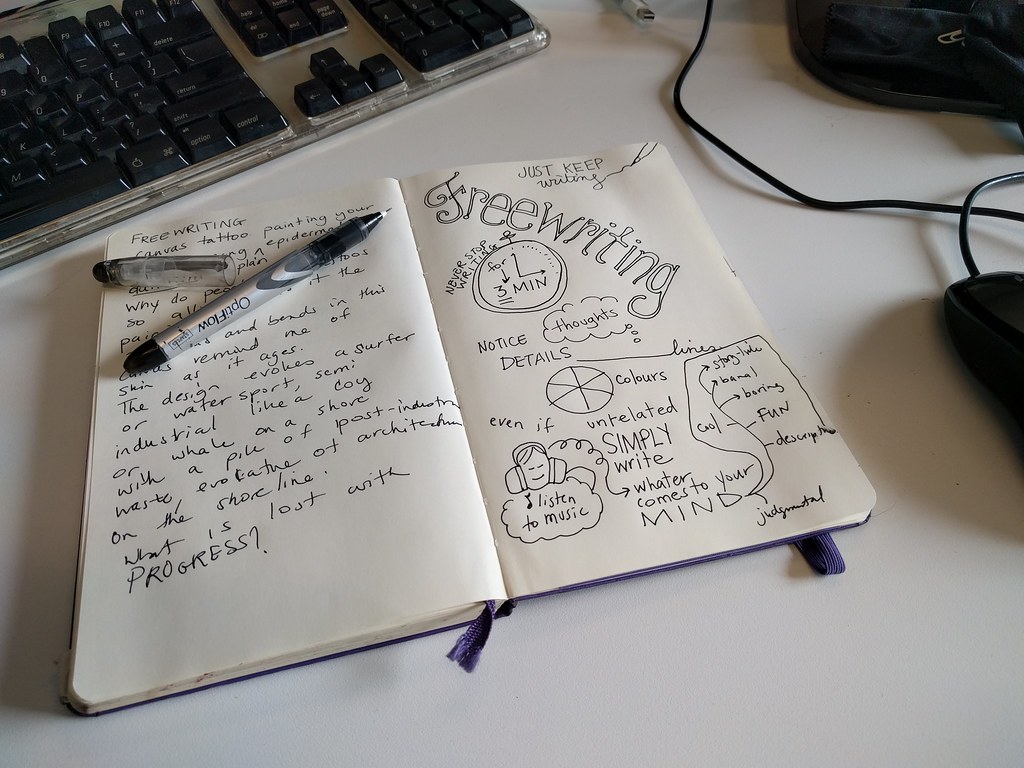Getting Ready to Write
Let’s get ready to write paragraphs! This section includes these topics:
- Brainstorming
- Topic Sentences
- Many Ways to Organize a Paragraph
- Supporting Details
Part 1: Brainstorming
A. Warm up
Before you write a paragraph, do you spend some time thinking about the topic? How do you come up with ideas about your topic? Talk about this with your classmate(s).
B. Getting Started
Before you write about a topic, it is helpful to think about your ideas. You can write your ideas down, you can draw your ideas, you can talk about your ideas. Teachers sometimes call this “brainstorming.”

Tip! You can brainstorm in any language you choose. You can also brainstorm in English and in another language together.
When you brainstorm, do not worry about grammar, spelling, or punctuation. Thinking about rules stops our thinking. Brainstorming is all about getting ideas.
C. Brainstorming Styles
There are many ways to brainstorm. You can try different ways to see what you like. Here are some brainstorming styles:
Style 1: Listing
List your ideas. Use bullet points or numbers. Use short phrases or words.

Style 2: Clustering
Use a web diagram with circles. Write your topic in the middle circle. Then, write ideas and add more circles.

Style 3: Freewriting
Write about the topic without stopping. You can time yourself. You can write for 5-10 minutes. Do not worry about grammar, punctuation or vocabulary.

Here are more ways to brainstorm:
- Use your body to think about your ideas. You can move, walk, or stretch. Then you can write about your ideas.
- Talk to a classmate. Think about your ideas while talking. Then write down the ideas you had.
- Record yourself talking about your ideas. Listen to your recording and write down your ideas.
Note: If you feel confused about the topic you are writing about, ask for help! Your classmates and teacher can help you!
D. Practice!
Choose a topic from the following list. Then choose a brainstorming style from Part C. Brainstorm for 5 minutes. Share your ideas with your classmate(s). How did it feel to use the brainstorming style?
- A friend or family member that you love
- Your favorite meal
- A brave person you know
- How writing in English makes you feel
- Your favorite movie
- A place you want to visit
Part 2: Topic Sentences
A. Warm up
What is a topic sentence? What is a paragraph? Share your answer with your classmate(s).
B. Read about topic sentences
A topic sentence has a subject and a verb. The topic sentence tells the reader what the paragraph is about (the subject). It also tells the reader what you will say about the topic (the verb). Note: Sometimes, teachers call this verb/verb phrase the controlling idea.
Topic Sentence = Topic (Subject) + Controlling Idea (Verb phrase).
Read the examples below. Does each topic sentence tell you the topic? Does each topic sentence tell you what the writer will say about the topic?
- Example 1: There are three important parts of my identity.
- Example 2: The Black Lives Matter movement is for everyone.
- Example 3: I will write about rest and why I need to rest more in my life.
Tip! Imagine you are driving a car. As the driver, you are the writer. You are in charge. The car is the topic sentence. Where you drive the car is the controlling idea. It shows where you are going with the topic.

C. Practice!
Write a topic sentence for each of the topics below. Share your topic sentences with your classmate(s). Help your classmate to check for a topic and a controlling idea.
- A family member that you love
- Your favorite meal
- A brave person you know
- How writing in English makes you feel
- Your favorite movie
- A place you want to visit
Part 3: Many Ways to Organize a Paragraph
A paragraph is made of a group of sentences. It usually has a topic sentence. There are many ways to organize a paragraph (Pearson). There is no one right way. There are some styles that are more common. There are some styles that are more familiar. Here are some examples of how you can organize a paragraph.
A. Examples
Style 1: Topic sentence at the beginning of the paragraph
I will write about rest and why I need to rest more in my life. First, rest makes me feel peaceful. I can feel calm. Second, rest helps me to help others. When I rest, I can help others try to rest too. Third, rest means I do not need to push my body. If I push my body too hard, I can get hurt.
Style 2: Topic sentence in the middle of the paragraph
First, rest makes me feel peaceful. I can feel calm. Second, rest helps me to help others. When I rest, I can help others try to rest too. There are many reasons why I need more rest in my life. Rest means I do not need to push my body. If I push my body too hard, I can get hurt.
Style 3: Topic sentence at the end of paragraph
First, rest makes me feel peaceful. I can feel calm. Second, rest helps me to help others. When I rest, I can help others try to rest too. Rest means I do not need to push my body. If I push my body too hard, I can get hurt. This is why I need more rest in my life.
Style 4: Topic sentence at the beginning and end of the paragraph (two parts)
I will write about rest. First, rest makes me feel peaceful. I can feel calm. Second, rest helps me to help others. When I rest, I can help others try to rest too. Third, rest means I do not need to push my body. If I push my body too hard, I can get hurt. This is why I need to rest more in my life.
Style 5: No topic sentence
First, rest makes me feel peaceful. I can feel calm. Second, rest helps me to help others. When I rest, I can help others try to rest too. Third, rest means I do not need to push my body. If I push my body too hard, I can get hurt.
Note: Sometimes paragraphs do not have a topic sentence. This is also OK! Talk to your teacher about topic sentences for this class.
B. Discuss
Talk to your classmate(s) about the questions below:
- Which style(s) did you already know about?
- Which style(s) did you not already know about?
- Which style(s) do you want to try?
Part 4: Supporting Details
Supporting details are sentences in a paragraph that explain your topic more to the reader. Supporting details make your paragraph interesting. They also help your reader understand your ideas. Here are some ways to write supporting details. You can:
- give reasons
- give an example
- add more information
- describe how, when, why, where, etc.
- explain what something means
Practice!
Read the sample topic sentences below. Can you write several supporting details about each one?
- Sunrise is my favorite time of day.
- Electric cars are better than gas-powered cars for three reasons.
- Gas-powered cars are better than electric cars for three reasons.
- The color blue has different meanings in different cultures.
- It is good to speak more than one language for several reasons.

